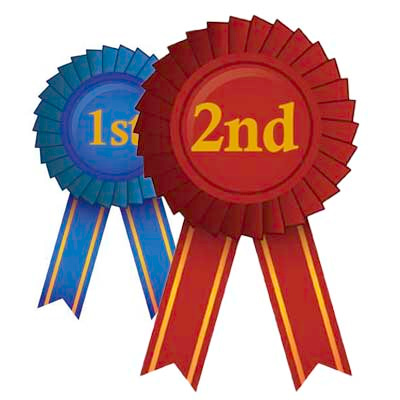Secondary Subjects – Complementary or Distracting?

Many images have more than one subject. Whether or not this is a good thing depends on whether the secondary subjects complements the primary subject or is a distraction to the primary. The subject(s) of a photo are those parts that are waving their arms and screaming, “Look at me! Look at me!” The most animated and loudest part is the primary subject and the runner-up (if there is one) are the secondary subjects.
Whether or not having a secondary subject is a good thing or not depends on if it is complementary or distracting to the primary image. A good secondary subject complements the primary subject. Its characteristics are:
- it enhances and draws attention to the primary subject
- it helps complete the story you are telling
- most importantly it doesn’t compete with the primary subject for attention – it creates no confusion as to what is the primary subject
Examples In The Use Secondary Subjects
– A Successful Use Of Secondary Subjects
Dorothea Lange’s “Migrant Mother“ photo is a great example of using a secondary subject properly. The mother is clearly the subject. The children are composed in a way to draw attention to the mother. The children also complete the story by indicating the woman as a mother. If the children were not present, we wouldn’t know if the woman was a mother or not which would lessen its emotional impact. Knowing (rather than having to assume) that the woman is a mother really strengthens the emotion of the image and creates greater impact.
As important as the children are in Lange’s photo they don’t compete with the mother for attention as the primary subject. This is because the faces of the three children are obscured so they don’t hold our attention. They simply complete the story and direct our attention to the mother. If their faces were visible, it would be a completely different question of who was the subject of the photo.
– A Failed Use of Secondary Subjects
Conversely, my photo, “Houston Pointillism”, has secondary subjects that overwhelm the primary subject. This photo was shot at the Museum of Fine Arts Houston and I loved how the beaded curtain created a pointillism effect on the view of downtown Houston. I also liked the juxtaposition with the art on display in the gallery. However, this composition utterly fails as most people don’t understand the photo even with the hint in the title. The art, the secondary subjects in my mind, is more prominent, in sharper focus, and has light to direct our eye all in competition with and overwhelming my primary subject.
What To Do With Failed Secondary Subjects
Okay, so if you are like me and have a secondary subject that fails what can you do? As I see it, there are basically five options:
- Split the image into two photos. People often include the secondary subject because they like how the light falls on it, or the shape or color, etc. Don’t try to crowd too much into one photo. Anything that takes attention away from the primary subject has to be considered expendable. Make a copy of your photo and process it (probably involves removing the primary subject) so that the secondary subject becomes a new primary subject of its own in a separate image.
- Remove the secondary subject by cloning or cropping.
- Process the secondary subject so it is less obvious. For example, you can lower its exposure or saturation to make it less noticeable.
- Re-compose through cropping to give more attention to the primary subject.
- Re-shoot the subject. This is what I need to do with Houston Pointillism. I should shoot it standing on the other side of the statue and compose just within the window frame. I would no longer have the interesting artwork but those are better kept to their own photos.
If used properly, secondary subjects can be a valuable tool in creating captivating images. Just don’t let them distract you from the primary subject.
Don’t Confuse “Picture Within The Picture” With A Secondary Subject
I’ve heard people talk about secondary subjects as the Picture Within the Picture (PWP). However secondary subjects and PWP are two different things. The secondary subject calls out for attention. The PWP makes you look for it. It’s there in plain sight but doesn’t call a lot of attention to itself. Think of the Ken Burns effect. The Ken Burns effect starts with a tight view of a section of an image that by itself is a well composed image, the PWP. Then by zooming out or panning you see that it is part of a larger image. While you can still see the PWP it becomes subsumed within the larger image. The PWP becomes part of the general background and doesn’t compete with the primary subject of the larger image.
A Bonus Tip
I suggest that you click on the link and read the Wikipedia article on Lange’s Migrant Mother. It does a great job of discussing the series of photos and the changes in composition and use of secondary subjects that Lange made before her final composition.
Leave A Comment And Share
I’d love to hear your comments and feedback on this post. I hope it was helpful. What successes and failures have you had with secondary subjects in your photos? Please leave a comment in the comment box below.
Also, if you like this post please share on Facebook and Twitter.



